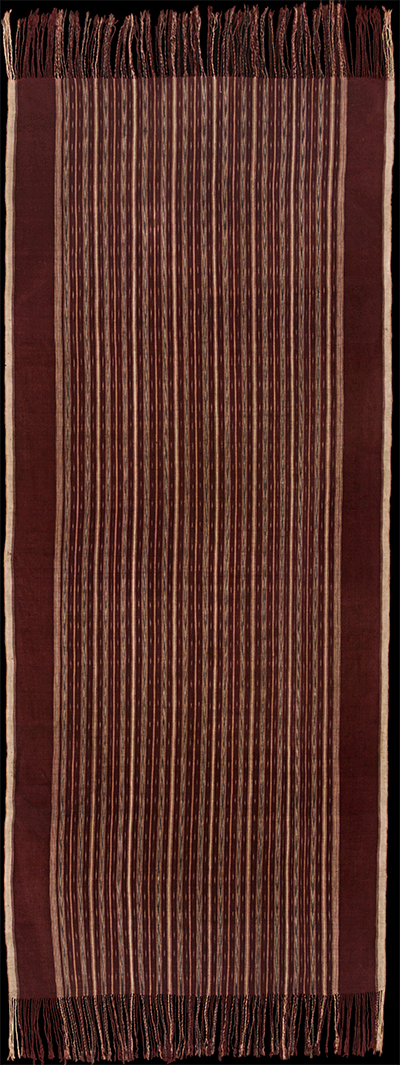| |
 
 | | | |
249 Sumatra, Batak
Ulos (shawl)  
| | Locale: | Silindung valley, most likely, but also found in other regions, be it locally made or imported from Silindung. | | Period: | Second quarter 20th c. | | Yarn: | Cotton, hand-spun, extremely fine, double-ply | | Technique: | Warp ikat | | Panels: | 1 | | Size: | 66.5 x 156.5 cm (2' 2" x 5' 1") LW: 2.35 | | Weight: | 149 g (5.3 oz), 143 g/m2 (0.47 oz/ft2) | | Design: | Ulos mangiring carrying eleven narrow longitudinal stripes with ikated chevrons in black on white, alternated with plain stripes in maroon, white, turmeric-like yellow, and pale blue. Wide plain borders in deep maroon, with white strip offsetting the narrow maroon selvedges. | | Comment: | [PHOTOGRAPHY PROVISIONAL] Many variants of ulos mangiring were woven in the Silindung valley. This example, with its modest size and extremely fine hand spun cotton, probably represents the elegant type mangiring jau, described by Niessen as 'fashionable shouldercloth for women, better made than variants for ritual purposes [which tended to be rougher, made in a hurry, tH], with finer yarn of any colour.' The epithet jau, 'far', may derive from the fact that such cloths used to be imported from the Angkola Batak region. Maroon weft. Colourfast dyes, presumed synthetic. A very light cloth with a soft but strong feel, that emanates a sense of luxury. Finely twisted fringes. | | Background: | Chapters on Sumatra and Batak. | | Compare: | 146 174 203 252 | | Sources: | Niessen, Legacy in Cloth, Cat. 5.7a. Type description, p. 307. | | |

©Peter ten Hoopen, 2025
All rights reserved.
|
|


